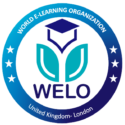
Introduction:
In the ever-evolving landscape of education, hybrid learning models have emerged as a transformative approach that blends traditional classroom methods with digital technologies. This innovative approach seeks to enhance the learning experience by leveraging the strengths of both in-person and online modalities.
Flexible Learning Environments:
Hybrid learning models provide students with the flexibility to engage with educational content from various locations. Whether in the classroom or at home, learners can access resources and participate in activities that accommodate their individual preferences and schedules.
Integrated Technology Platforms:
Central to the success of hybrid learning is the seamless integration of technology platforms. Learning Management Systems (LMS), virtual classrooms, and collaborative tools play a crucial role in facilitating communication, content delivery, and assessment in a unified digital environment.
Blended Curriculum Design:
Hybrid learning involves a carefully curated blend of traditional and online instructional methods. Educators design curriculum content that leverages the strengths of face-to-face interactions while harnessing the multimedia and interactive capabilities of digital resources.
Personalized Learning Paths:
One of the advantages of hybrid learning is the ability to tailor educational experiences to individual student needs. Adaptive learning technologies and data analytics help identify students’ strengths and weaknesses, enabling educators to personalize learning paths and interventions.
Real-Time Assessments and Feedback:
The integration of technology allows for real-time assessments and immediate feedback. Educators can gauge student understanding instantly and tailor instruction accordingly, fostering a more responsive and dynamic learning environment.
Collaborative Learning Opportunities:
Hybrid models emphasize collaborative learning experiences, whether in person or through online platforms. Students can engage in group projects, discussions, and activities that promote teamwork, critical thinking, and communication skills.
Professional Development for Educators:
Successful implementation of hybrid learning requires educators to adapt to new instructional methods and technologies. Professional development programs empower teachers with the skills and knowledge needed to effectively navigate the hybrid learning landscape.
Access to Rich Multimedia Content:
Hybrid learning models leverage digital resources to provide students with access to a diverse range of multimedia content. This includes interactive simulations, video lectures, and virtual field trips, enhancing the depth and breadth of the educational experience.
Data-Driven Decision Making:
Data analytics tools enable educators to gather insights into student performance and engagement. By analyzing this data, schools can make informed decisions about instructional strategies, resource allocation, and continuous improvement initiatives.
Community Engagement and Support:
Hybrid learning extends beyond the classroom, involving parents, guardians, and the community at large. Regular communication, online forums, and collaborative projects foster a sense of community, creating a supportive network for students’ holistic development.
Conclusion:
Hybrid learning models represent a dynamic and adaptive approach to education that harnesses the potential of both traditional and digital learning environments. By incorporating these 10 key components, educational institutions can create a holistic and responsive framework that prepares students for the challenges of the 21st century. As the landscape of education continues to evolve, hybrid learning stands at the forefront, offering a pathway to a more personalized, flexible, and engaging learning experience.

